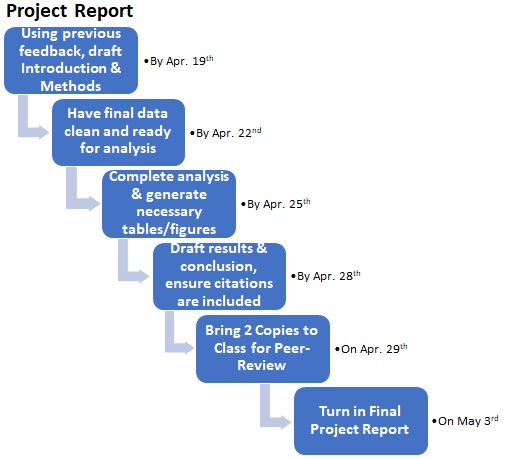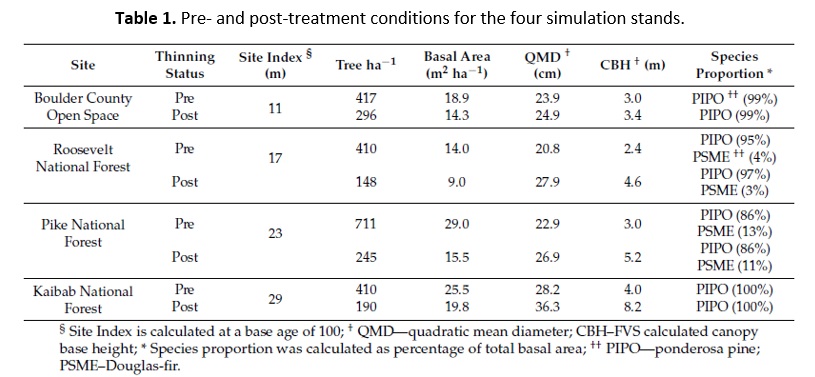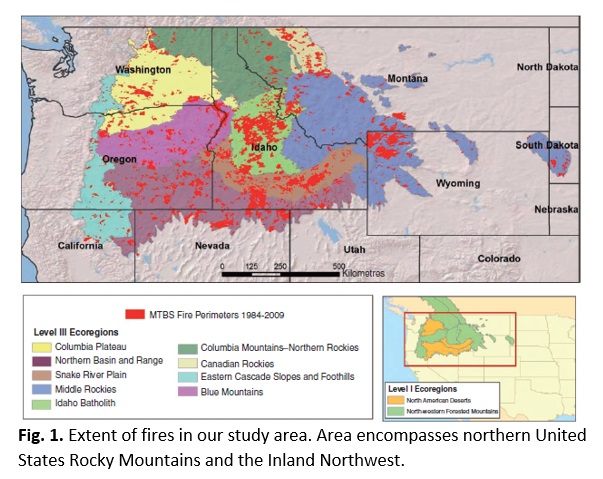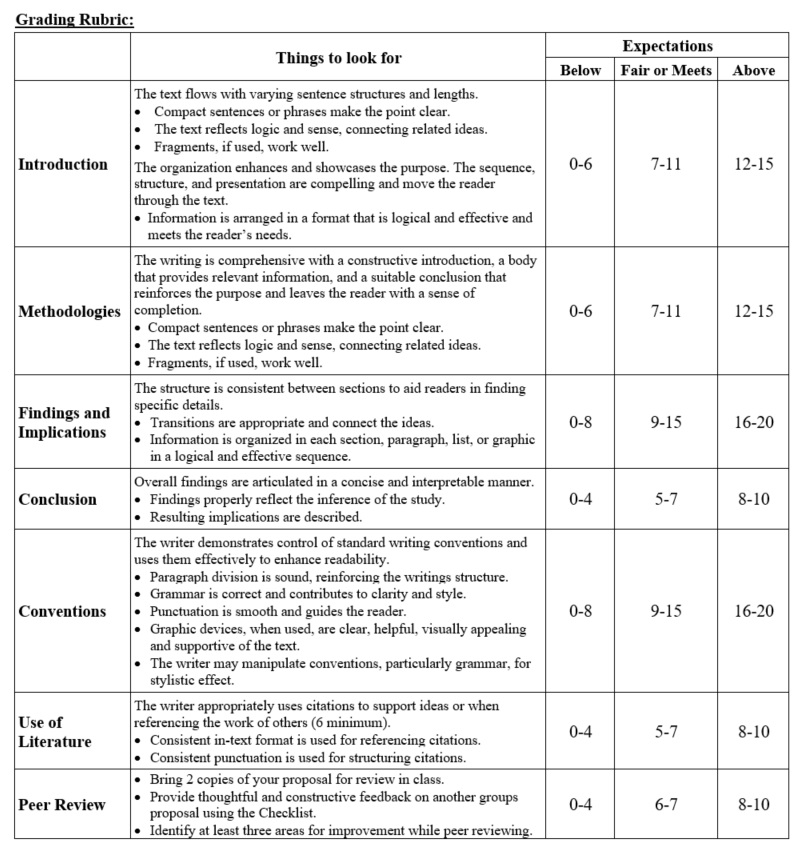NR 421 – Project Report
Premise: Now that your boss has signed-off on your sampling protocol and provided any last minute advice on your data collection and analysis, you should be finishing your data acquisition process and beginning to summarize your findings. In your preliminary meeting with your client you promised the completed project as a written report on May 3rd by 5:00 pm. This report should briefly explain the client’s needs and how your sampling design meets them, how your data was collected, the analysis conducted, the results, and a simple interpretation of the statistics.
Report Instructions: Your report is to be done in the group you have worked with throughout your project and should be typed using 1.5 line spacing and Times New Roman 12pt font. All included tables, figures, and images must be adequately referenced within the text and be accompanied by a descriptive caption. Bring 2 copies of your report to class on April 29th for peer-review. A printed copy of the final report is due on Friday May 3rd by 5:00 pm.

Review your report against this checklist to ensure all important elements are covered:
- Project Summary
- Summarizes the important points from each section in a sentence or two.
- Follows the arrangement of the rest of the report.
- Stays within a maximum of 200 words.
- Introduction
- Conveys the clients desired management objectives and the reason why they want to manage for these things.
- Articulates what characteristics need to be assessed to inform the objectives.
- Linkages to proper sampling design and sample allocation are made within the context of the project and connected to the statistical, managerial, and economic benefits it can provide.
- Methodologies
- Material is appropriately broken out to make it organized and easy to read (i.e. site description, sampling design, etc.).
- All sample design elements are thoroughly defined so anyone with natural resources knowledge could implement the process, including experimental unit, sample size, plot spacing, field navigation between plots, observations to collect, and representative measures for summarizing the data.
- Any external data used is adequately summarized and explained.
- The sampling design is connected to how it will provide the clients desired information.
- Results
- Information revealed by the sampling design should be concisely presented.
- Presented information is free of judgmental or biasing language.
- The language used to report these findings should draw on the sampling terminology we have discussed and should include any necessary tables, graphs, and images for describing your findings.
- Finally, you should discuss any limitations or biases that might be important for interpreting the study’s results.
- All necessary jargon is properly defined for non-experts to understand.
- Conclusion
- Briefly summarizes the management strategy(s) best suited to help meet the landowner’s objectives and anything the landowner should consider in moving forward with their management.
- Technical Writing
- Defined formatting expectations are followed.
- Complete explanatory captions accompany tables and figures, and all tables and figures are referenced in the text.
- Consistent formatting is used throughout the document to make it easier for the reader to follow.
- Grammatical and spelling errors are minimized so that they do not distract the reader.
- Decisions Supported by Science
- A minimum of 6 scientific references are used to support statements of fact or connect ideas.
- All citations are correctly and consistently referenced in the text and at the end of the document.
Examples for Citing Literature
– At the end of the document use the following citation conventions:
- Peer-reviewed Journals (multiple authors):
- Carrot, Y.H., Turnip, J.U.H. and Tomato, A.T. (2010). Spectral analysis of mixed vegetables in pies. International Journal of Vegetable Science, 19, 976-983.
- Peer-reviewed Journals (two authors):
- Carrot, Y.H. and Turnip, J.U.H (2005). Soup mixes: a comprehensive review. International Journal of Soup Science, 14, 245-248.
- Peer-reviewed Journals (single author):
- Carrot, Y.H. (2005). Carrots in the vegetable word. International Journal of Carrots, 14, 245-248.
- Books / Book Chapters:
- Carrot, Y.H. and Turnip, J.U.H. (2001). The use of potatoes in soup: a review, in “Soups of the World”, Ed. Fried Potatoes, Wiley-Blackwell, pp 67-79.
- Agency Reports:
- Carrot, Y.H., Turnip, J.U.H. and Tomato, A.T. (2010). Review of soup quality standards within the National Park Services’ cafeterias. NPS report, USA, pp 46
– To reference an article in the text as someone saying something:
- As we can see from Carrot (2002), the choice in soup mix is very important
- Carrot et al. (2002) tell us that the freshness of vegetables influences the soup.
- This is supported by Carrot and Potato (2002) who showed how vegetable freshness impacts acidity.
– To attribute a statement in the text to an article:
- Single Author:
- The quality of a soup is impacted by the freshness of the vegetables (Carrot 2002).
- Multiple Authors:
- The acidity of a soup is impacted by the freshness of the vegetables (Carrot et al. 2002).
- Multiple Citations:
- Vegetable freshness impacts the acidity and quality of a soup (Carrot 2002; Carrot et al. 2002).
Example of Figures and Tables


As with all technical writing, the ability to write clearly and concisely will be considered in the evaluation of your proposal. Additionally, you are expected to properly support and justify your statements about forest management, your methodologies, and statistical approaches with literature citations.

Code of Conduct: Do not copy and paste material from these instructions, papers, or books when writing your essay, the only exception is that the provided maps may be reused. Attempt to rewrite in your own words the message you want conveyed and then provide proper citations. Failure to do so will result in a score of 0.
